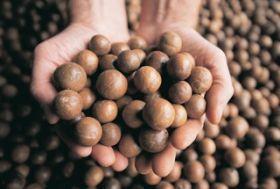
Australian horticultural industries are already eyeing increased opportunities in Japan, after the confirmation of a free trade agreement between the two nations earlier this week.
Citrus Australia chief executive Judith Damiani joined Australian Prime Minister Tony Abbott and Japanese counterpart Shinzo Abe in Tokyo for the announcement on Monday (April 7).
Under the terms of the FTA, Japan has agreed to eliminate orange and mandarin tariffs over 10 and 15 years respectively. Orange tariffs during the peak of Australia’s season (June to September) are currently 16 per cent while mandarin exporters pay a 17 per cent duty on their fruit. A 10 per cent tariff on Australian grapefruit will be eliminated in five years.
Damiani said the Australian citrus exports to Japan have grown steadily over the past 10 years, with that trend likely to continue as the tariffs are gradually phased out.
“Though the time frames are a little long, this is a great outcome for Australian citrus,” Damiani explained. “Japan is our largest and most important market valued at A$40m (US$37m) in 2013.”
Australian tree nut exports will also benefit from tariff reductions.Japan is currently the second largest export market for Australian macadamias. Once the FTA is ratified, the immediate elimination of a 5 per cent duty will take A$500 (US$468) off the per tonne price of Australian macadamia kernels, according to the Australian Nut Industry Council.
While Japan has an established almond market, Australia does not currently enjoy a meaningful share of it, despite being the world’s second largest producer of the nut. The removal of the 2.4 per cent tariff will create an opportunity to renew export efforts for this sector.
A 10 per cent tarfiff on Australian walnuts will be lifted over five years, while the elimination of a 4.5 per cent tariff on Australian pecans will significantly enhance the position of this industry compared to much larger producers in North America.



